#chantry of auri-el
Explore tagged Tumblr posts
Text
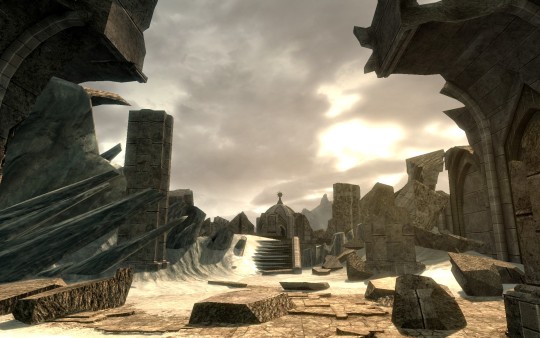
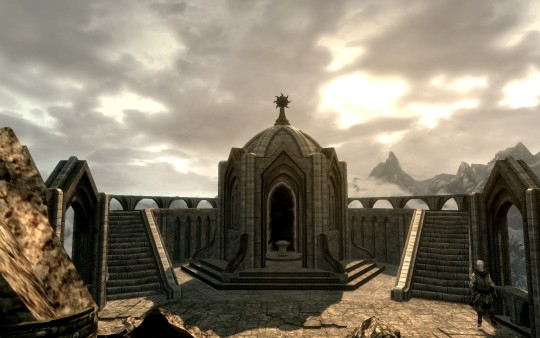
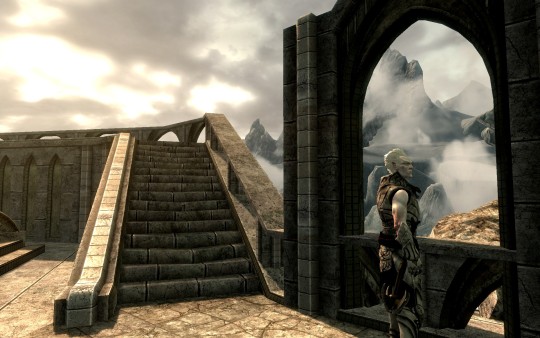
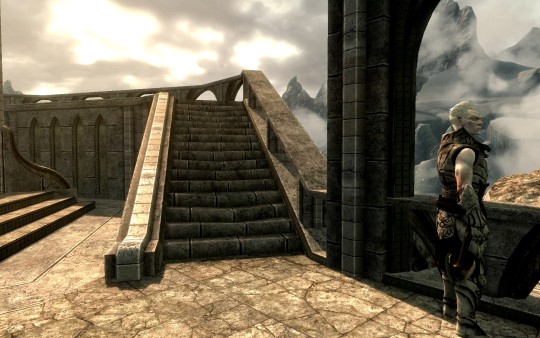


Chantry of Auri-el (ruins)
(feel free to use for reference etc.)
#auri-el#chantry of auri-el#dawnguard dlc#knight paladin gelebor#snow elf#forgotten vale#skyrim#skyrim screenshots#i needed these screenshots for... reasons
90 notes
·
View notes
Text
one day i'll draw athenath surrounded by gleam blossom flowers .... augh!!
#bishop.txt#part-snow elf who had no idea that his grandfather WASNT the last snow elf. my beloved.#oc ; athenath#i think post-everything athenath travels regularly to the chantry of auri-el to spend time with gelebor#bc they understand hes not ready to leave the chantry and arent gonna pressure him but gelebor knows the option is there now to leave
1 note
·
View note
Text
Worst Places to Jerk Off in Skyrim
In no particular order, as they are all shit in their own ways :P
Redwater Spring
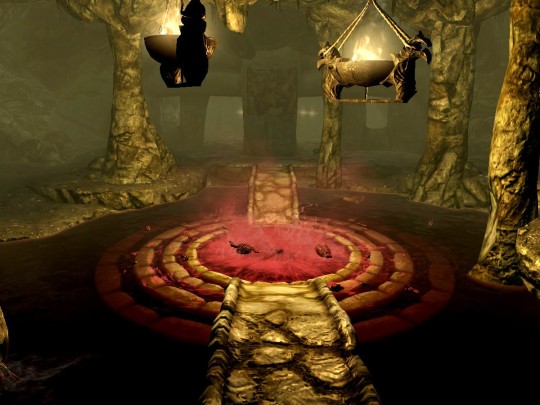
Unless you are a vampire or werewolf then you are getting all the diseases. And if you are a vampire, don't do that to the food??? Unless, you're into that 😏
2. Altar of Molag Bal
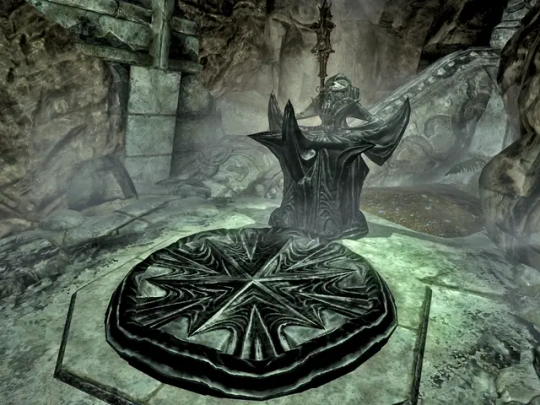
I don't even need to say why, y'all already know. If you are so inclined (I'm not kink shaming I'm kink asking why) go to the one in Castle Volkihar at least. Don't do it in Markarth my guy
3. The Dwemer Lockbox at Septimus Signus's Outpost
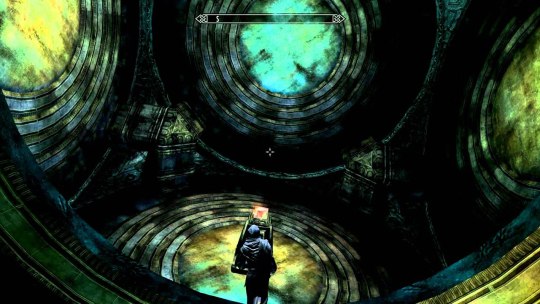
Okay, this might just be me but it would be impossible to have a good time inside a giant Dwemer mechanism with Hermaeus Mora lurking around. HOWEVER, I am aware I am posting this on tesblr on monsterfucker.com so if you are an enjoyer of tentacles than this may be a top spot. You do you bestie, have fun becoming a Seeker someday <3
4. The Chantry of Auri-El
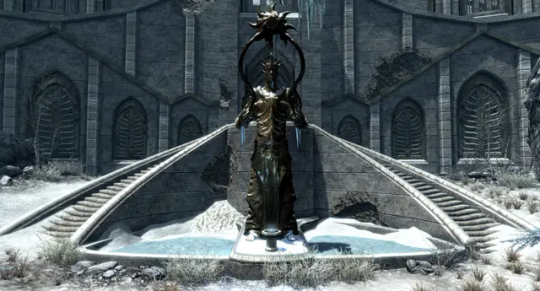
Gelebor has been through enough
5. Frostfall Lighthouse
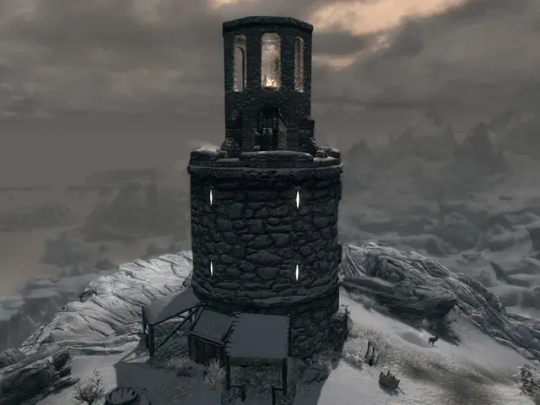
You probably don't want to anyways
6. Inside Tel Mithryn with Neloth is there
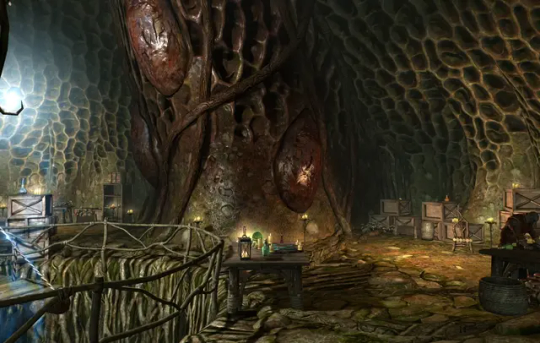
This also has the caveat as some of you (including myself to an extent) are into Neloth. That said, I feel like he would absolutely destroy you with insults that even if he didn't ban you you'd never come back
7. The Warren

Wahoooo second Markarth location! Incredibly depressing, would not be a good vibe
8. The Chill

It's fuckin cold my guy
9. Yngvild
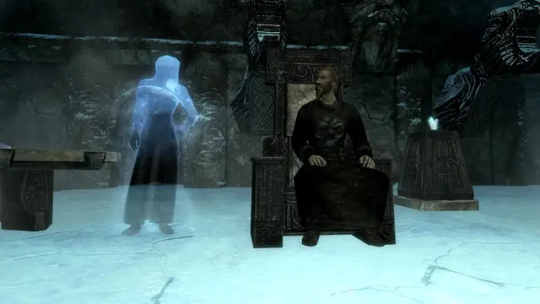
Also cold but more importantly, Arondil has major issues. The room of dead women, the contents of his journals NOPE I am kinkshaming him
10. The Butcher's murder room in Hjerim

Let's offer the dead some peace since we cannot bring the killer to justice as the quest is always broken!!!
Feel free to add your own picks, we could also do a list of the best places ;)
#tesblr#the elder scrolls#tes#skyrim#meme#mdni#tw: suggestive#idk how to tag this#worst places to jerk of in skyrim#i talked about this at dinner ill have you all know
3K notes
·
View notes
Text
It’s interesting that there’s no snow elf structures or ruins left in Skyrim (that we know of or see in the games) besides the Chantry of Auri-El. I can see a few reasons why that might be:
From a Doyalist perspective, the game developers just didn’t add any for whatever reason. Maybe they didn’t even consider it, maybe they didn’t have time, maybe they didn’t want two sets of abandoned elf ruins (alongside the dwemer), etc.
The snow elves used building materials that degraded faster or didn’t last thousands of years. Given the Chantry of Auri-El and the way shrines and arches around it have stood relatively in tact for thousands of years without anyone tending to them makes me doubt this option though.
The Nords/Atmorans destroyed any snow elf structures or settlements. This would be plausible if, like the last option, their structures weren’t very big or permanent, but like with the last option that’s sort of doubtful. Dragons, however, could’ve helped with that.
The Nords/Atmorans converted snow elf structures or used them for their own purposes, and now we just can’t tell they were ever something else. Our one reference for snow elf architecture (the Chantry of Auri-El) is made of stone (either built or carved out of the mountain (the cooler option imo)), and perhaps old snow elf ruins were just used as templates for Nord barrows or cities because of their sturdy build and location. There’s a theory I’ve seen floating around that the College of Winterhold either at one point was a snow elf ruin that was converted into something else, or was built on top of one, due to its similar architecture style to the Chantry of Auri-El. Maybe cities like Windhelm or (the original) Winterhold were built on top of snow elf cities.
Perhaps it’s just a mix of the above. Maybe only their important or significant religious structures were built of stone and the rest of was easier for the Nords/Atmorans to raze and then degrade back into the environment. What wasn’t destroyed was eventually incorporated into the Nord’s society as tombs or cities.
And none of this is in the game because the developers maybe perceived the snow elves as just a prerequisite for the falmer, rather than a group of people with a culture of their own. Or maybe for some behind the scenes reason in the development of the game like I mentioned earlier. Who knows.I have fun speculating about it though
#headcanon#tes#the elder scrolls#skyrim#skyrim headcanon#falmer#snow elves#mine#I spend approximately 30% of my free time thinking about falmer/snow elves so I might as well post some of those thoughts
630 notes
·
View notes
Text
A comprehensive study of the Ancient Snow Elves
By Eltirions

(Picture added by myself)
Link: https://www.reddit.com/r/teslore/comments/1foensm/a_comprehensive_study_of_the_ancient_snow_elves/
Greetings! Almost two years ago I wrote a theory in this post pondering on the connections between the dragons you fight in the Forgotten Vale and the Snow Elves who lived there. Since then I’ve spent a good deal of time thinking about and researching the Snow Elves, crafting theories to fit their existence into the wider history of Tamriel. The end result is this: a collection of all the relevant knowledge I could find about these mysterious Mer and my thoughts and hypotheses about them.
So, first off I’ll quickly summarise the basic facts we know about the Snow Elves:
Their civilisation existed in and around Skyrim from somewhen in the Merethic Era to the early First Era.
They fought with the Atmorans and early Nords, eventually being defeated and almost completely exterminated by them, with the survivors either seeking shelter with the Dwemer (and turning into the modern-day Falmer) or hiding away in secret places like the Chantry of Auri-El.
The Atmorans/Nords destroyed all traces of their civilisation, to the point that we only have two confirmed sites of Snow Elf habitation remaining.
By the time of 4E 201, we only know of two Snow Elves who are still alive: Knight-Paladin Gelebor and his brother Arch-Curate Vyrthur.
What does this tell us? Not a lot. But, thankfully, we have some more information, most of which comes from conversation with the aforementioned Knight-Paladin Gelebor during Dawnguard’s main questline, where we also visit the Chantry of Auri-El and kill Arch-Curate Vyrthur.
Gelebor is a treasure trove of information on the Snow Elves. He tells us that the Chantry he guards was built in the early First Era, that it was the greatest centre of religion for his people and that Auri-El was their chief god, while Trinimac, Syrabane, Phynaster and Jephre had smaller chantries. He calls the Snow Elf civilisation an empire, but also mentions that they only ruled a portion of Skyrim. He mentions uneasy alliances with the Dwemer and tells us that there were Snow Elves who resisted the Dwemer’s deal, but they all ended up dead, disappeared or ultimately gave in. When you meet him again after killing his brother and fighting your way through the Forgotten Vale, he mentions that he still holds out hope for hidden enclaves of his kind and that he believes the Falmer may one day become something like they once were.
This is all valuable information, and the Dawnguard DLC offers us much more. It gives us a look at Snow Elf architecture, religion and armour within the Forgotten Vale, and there are also four books added by the DLC that are records written by Snow Elves of the early First Era, which have to be decoded from their alphabet and language (more on that later). These books give us the term Ice Elves as another name for the Snow Elves, mention ‘Old Ones’ and ‘Young Ones’, it gives us an example of a method they used to reckon time, and gave us a description of what the pilgrimage through the Chantry of Auri-El was like.
Finally, let’s look at Arch-Curate Vyrthur. He was the leader of the Chantry of Auri-El, and he claims to have been able to commune with his god. This ultimately didn’t avail him from vampirism however, hence why he created the Tyranny of the Sun prophecy to defeat Auri-El. This is important: the Sun is typically ascribed to Magnus and has little to nothing to do with Auri-El (or indeed, any of Akatosh’s other aspects, as far as I know) but Snow Elf religion seems to create a connection between Auri-El and the Sun. This makes it unique amidst Tamrielic religions.
All of this information allows us to create a more complete view of the Snow Elves. Their religion has clear overlaps with Altmeri belief, but also strange differences. Their culture is also clearly divergent from the Aldmer to the point that they created their own language and alphabet, and their architecture is unique, though similar to Ayleid and older Altmer/Aldmer architecture.
But we still don’t know many important things. Allow me to present answers, or theories, to a few of them.
When did the Snow Elf culture begin?
The Aldmer began colonising Tamriel in the middle Merethic Era. While hard dates don’t exist, I think we can estimate that the creation of Snow Elf culture happened around that time, corresponding roughly with the rise of the Ayleids in Cyrodiil. We can’t say anything conclusive without more evidence.
Where did the Snow Elves live?
Gelebor says they ruled a portion of Skyrim. Aside from the Forgotten Vale, with its entrance located in the northern Reach and the Vale itself found in the mountains between northwestern Skyrim and western High Rock, we know of one other pre-Dwemer Snow Elf settlement site: in ESO, we can visit Snow Elf ruins located under Fort Greenwall in the Rift. Skorm Snow-Strider’s Journal, found in Forelhost in Skyrim and dating to 1E 139, also mentions King Harald fighting Snow Elves around Lake Honnith (an older name for Lake Honrich, the lake Riften lies on) and the eastern Rift. Finally, though they aren’t settlement sites, we know that the Snow Elves’ last true battle was fought on Solstheim in the Moesring Mountains, indicating that they had some settlement there (although no Falmer are found anywhere on Solstheim during Skyrim or Bloodmoon); and that according to the book Songs of the Return, Vol 7, the entirety of the Whiterun plain was uninhabited by the Snow Elves due to fear of the Skyforge, which predates Elven settlement in Skyrim. It also mentions that when the Companions went south from Saarthal, they found many Elves who they all slew, indicating settlement through Winterhold and Eastmarch.
Put on a map, this forms a very strangely-shaped realm, though perhaps not if we consider that the Snow Elves seem to prefer colder climates. I would theorise that they inhabited the northern part of the country, including the northern parts of the Reach (and perhaps westwards into High Rock as well), Haafingar, Hjaalmarch, the Pale, Winterhold (minus Saarthal, naturally), down to Eastmarch and the Rift, and of course the island of Solstheim, though it was apparently shared with the Nords (perhaps the ancestors of the Skaal). This would leave Whiterun empty and the rest of the Reach and Falkreath open to others, perhaps Nedes and Orcs. An interesting note is that neither Falkreath nor Whiterun contain any Dwemer ruins either.
Who ruled the Snow Elves?
It’s hard to say. The Snow Prince, famous for being so good at killing Nords they gave him an honourable burial, is the best example of a race-wide leader we have, and Gelebor explicitly calls their civilisation an empire. The Snow Prince himself was widely recognised as the last hope for his race by the time of the Battle of the Moesring, so perhaps he was the descendant of a line of rulers. We can’t say much else. We do know, from antiquities found in ESO, that he had a throne.
Speaking of ESO, I already mentioned the ruins under Fort Greenwall, but ESO has several other pieces of content related to the Snow Elves. During the quest The Rise of Sage Svari we see a flashback where several Snow Elf warriors attack the sons of Ysgramor; these are ghosts, however, and are identical to High Elves, using High Elf gear and models. We can also find two other antiquities (a system of archaeology added by the Greymoor Chapter DLC), namely the Font of Auri-El, a shrine-like house furnishing that is described as distinct from the architecture of other Mer; and the Snow Treaders, a pair of enchanted and masterfully crafted boots. The Antiquarian Circle’s notes on the parts needed to create the latter item confirm that Auri-El occupied a special place in Snow Elf religion, that the Snow Elves had some collaboration with the Dwemer and were skilled craftsmen themselves, that they bred a type of tree called a snow-cedar and used its wood as a crafting material, and that they also used animal products such as snowy sabre cat fur in their clothes. It’s not much, but it is interesting nonetheless.
Let’s get back to some theorising, hm? I already mentioned that the Snow Elves’ pantheon featured Auri-El as chief of the pantheon, though with an unique focus on the Sun; their other gods we know of for certain are Trinimac (who likely served as the patron of the Paladins Gelebor is a part of), Syrabane, Phynaster and Jephre. This is interesting for a couple of reasons. Auri-El and Trinimac are staples of virtually all Elven pantheons, but Syrabane and Phynaster are continually referred to as Altmer, who were raised to godhood after their lives. In Syrabane’s case especially, he shows up around 1E 2200, far beyond the early First Era when the chantries were supposedly built. Phynaster is a traveller god and not officially considered a member of the Altmeri pantheon. Other members of the Altmeri pantheon such as Magnus, Mara, Stendarr, Xarxes and Anu(iel) go unmentioned. Ignoring this strangeness (perhaps Syrabane is much older than we know; he is known as an extremely skilled mage, after all), we see that the Snow Elf pantheon is unique.
We can see from the wayshrines of the Forgotten Vale that the Snow Elves were skilled mages which would explain Syrabane’s presence (but makes Magnus’ absence all the more strange). Phynaster is a wayfarer god who also taught Altmer to lengthen their lives; this connects well with Gelebor, who is one of the oldest living individuals in the setting that is not a vampire or a lich. Perhaps the first Snow Elves were devotees of Phynaster and further developed his techniques for long lifespans. Finally, there is Jephre, better known as Y’ffre elsewhere in Tamriel. He is the god of nature, and Snow Elf reverence for him is presumably based in the beauty of Skyrim’s nature.
If we look at the Chantry of Auri-El, we see that those who wished to enter the Chantry to seek enlightenment had to go on a pilgrimage, carrying an ewer of water which they would gradually fill as they passed by several wayshrines on their way to the Chantry itself. This process is described as arduous, and many were known to fail, which was considered disgraceful, while those who succeeded were rewarded with some form of enlightenment. The Chantry is one of the most impressive religious buildings seen across all the games, and Gelebor claims it was the greatest of the ones the Snow Elves built. And it was built in the First Era, after Ysgramor had returned and begun his extermination war on the Snow Elves. Snow Elf society must have been truly dedicated to religion to complete such a structure in a time of war and strife. And yet, while it is a grand structure, I wouldn’t call it ostentatious. The Chantry is beautiful, sure, but it isn’t richly decorated (except for the gold everywhere) and everything seems more built for function than for aesthetics.
All of this evidence leads me to believe that the beginning of the Snow Elves as a group distinct from other Mer lies in their spirituality: they came to Skyrim in order to distance themselves from the affairs of other Mer. They gave primacy to several gods of the Altmeri pantheon, namely Phynaster (who, as a god of travellers, wayfarers and pilgrims, would have appealed to them), Jephre, Syrabane (who I still can’t explain properly), Trinimac and Auri-El, who they gave Magnus’ connection with the Sun as well. They focused very much on enlightenment, perhaps to ascend in a similar manner as the Altmer seek to. This focus on spirituality would also explain why, despite being described as a great civilisation, the Snow Elves were so thoroughly defeated by the Atmorans/Nords.
Phew. Now that I’ve touched on all of that, I want to muse on a few things before the end. One of these is the original topic of my post about the Forgotten Vale: what is the connection between the Dragons and the Snow Elves? Mind you that the entirety of Alduin’s rule over Skyrim, including the Dragon War, happens between the Night of Tears and the fall of the Forgotten Vale. The connections between dragons and Akatosh is obvious, but it doesn’t seem to feature at all in Snow Elf (or indeed any Mer) religion - with one possible exception of a dragon's head being depicted on the chest piece of the Ancient Falmer armour, but I think that's a stretch. As I mentioned in my Forgotten Vale post, there’s a strong possibility that the Snow Elves of the Chantry had a good relationship with the dragons slumbering in the lake there (especially after the Dragon War, when both were being hunted by the Nords) and that their presence explains how the Forgotten Vale remained safe. While I touched on it in the post, I now think that Vyrthur (who, it stands to reason, could communicate properly with the dragons thanks to his connection to Auri-El) purposefully kept the dragons (who were sleeping at the time) from waking up, which might also explain why the lake is frozen over; we see in the Chantry that Vyrthur is a skilled frost mage. The dragons only awaken when the player comes by because they sense a fellow dragon soul. But I digress.
Another thing to consider is the Night of Tears. It’s commonly speculated that the true reason for the Snow Elf assault on Saarthal was that they knew the Atmorans had found the Eye of Magnus and feared its power; this gains new meaning when we realise that Magnus himself receives no mention in Snow Elf religion, whilst they are undoubtedly a people of great magical skill. When we consider that the Snow Elves considered the Sun to be Auri-El’s gateway to Nirn, and that they possessed both his Bow and Shield, one has to wonder what would have happened had they obtained the Eye and used the Bow on it.
A final curiosity is the Great Statue of Irkngthand, which you might remember from the second-to-last Thieves Guild quest in Skyrim. It’s a magnificent statue built in secret by the Snow Elves after being enslaved by the Dwemer, so it seems that even while enslaved and (partially) blinded they were capable of creating great works. Most interesting.
I think that, for now, I’ve covered everything I could find on the Snow Elves. I’ve not worked in theories about the Ice Tribes of TES Travels: Dawnstar’s connection to the Snow Elves or mentions of Arena’s Laintar Dale settlement being built on top of a Snow Elf settlement, due to the dubious canonicity of either source. I’ve also passed on mentioning the Falmer as we know and love them, perhaps I’ll reserve that for a future post (just who or what is Xrib, hm?).
If I’ve missed anything of relevance, please do let me know: I’ll happily talk about it or add it to the post. And I do apologise if this document is a bit of a mess; I’ve done my best to make it somehow cohesive, but it was all written in one burst of inspiration and my mind wanders a lot when writing. All that said, please let me know what you think, and maybe in two years I’ll have another post talking about the mysterious Snow Elves.
13 notes
·
View notes
Note
Hi, I was wondering for a while and decided to ask the expert: How do you think Auri-El worship and understanding of him differed between Altmer, Falmer and Ayleids? What little surviving imagery of Falmer's version of him doesn't seem to have any bird imagery unlike the other two races, instead depicting him as a full elf, so I'm wondering what your take on it is.
Excellent question anon! So excellent I spent a few days mulling it over, looking through notes, and even made a few headcanons along the way. The main points are in bold:
The only Falmeric depictions of Auri-El in the canon are in Skyrim and, to an extent, ESO. The Skyrim depiction is the Elven statue with the vaguely dragonbone-looking robes, whereas the Font of Auri-El has this lovely codex:

[I/D: A yellowed piece of paper headlined with "Ugron gro-Thumog", an Antiquarian in Solitude, reads: "Auri-El, by the looks of it. Seems a little abstract, honestly. Elves make a point of including Elven likenesses in their shrines to reinforce their familiar connections to the Divines. This probably rested near a statue of the Chief Divine himself."]
The font in ESO is a giant wayshrine-like structure with the symbol of Auri-El, a sun with eight curved flares, glowing gently in the center. This symbol is also seen in Skyrim, atop the wayshrines along the Chantry.
Notably, there are no statues of Auri-El, Elvish or otherwise, near these wayshrines in the Chantry. Which is the place made specifically for Auri-El worship. It's entirely possible that the sun was the default, with animal aspects taking on a more specific or diplomatic connotation; I can see the Falmer using the Eagle or even the Dragon to explain their faith to Atmorans.
My headcanon is that Elvish depictions of the Divines were based on the current Prince of that Divine. The Elf you see in the Chantry is, in my interpretation, a depiction of the Snow Prince who reigned when the Chantry was being built. Given that he's bald, it's possible that he was newly anointed as Prince.
Building on the previous bullet point, one of my longest held headcanons about the Falmer is that they were the most spiritual of the Elvish races, which is reflected in their iconography. Instead of conflating their visage with actual gods, they opted for abstractions and symbols as the gods simply do not take a mortal form. A mortal form is made from material, and that means material wants and material burdens; they shed all that! That's how they ascended in the first place!
Some exceptions exist. The Demigod Mara sacrificed her divinity to remain on Nirn, and so she was often depicted as either a mortal or a wolf.
This... differs quite a bit from the Altermic and Ayeild depictions of Auri-El, with the Altmer leaning heavily towards "Elven DILF" and the Ayleids using both Elven and animal aspects, sometimes at the same time.
The Ayeildoon statue of Auri-El is at Garlas Malatar, which is notably where Meridian champion Umaril the Unfeathered made his lair. I may or may not have extensive headcanons on the implications.
The Auri-El statue in the Forgotten Vale and the one in Alinor's Temple of the Divines look eerily alike. I am chalking this up to asset recycling.
#look what rolled in the trash bin#thank you for the lovely ask anon#it was nice to go through my notes and compile them#i'm always on my snow elf bullshit#the elder scrolls#skyrim#eso#auri-el
25 notes
·
View notes
Text
I. part of "The Knight-Paladin Alphabet Headcanons"
I am creating headcanons for the Knight-Paladin Gelebor right here. Warning, there will be NSFW ones too, though way later (they aren't there yet).
Here are a 2 letters from the first chapter:
G — Grief — How do they process grief?
It is said that Auri-El could do naught but teach the Elvenfolk to suffer with dignity.
This paraphrase might not completely fall in line with the Falmer doctrines of faith, but the theme of being ennobled by martyrdom is common, starting with the very initiation to enlightenment undertaken in the pilgrimages to the Chantry of Auri-El.
True to his beloved culture, perhaps even influenced by it, he tends to mourn quietly. The Knight-Paladin seldom weeps openly. He harbors no desire for pity, for he believes a guardian ought to remain silent about his own sorrows. To impose his emotions upon another strikes him not only as inappropriate but profoundly selfish.
Therefore, he does not showcase the level of hurt he's under — a subtle display of melancholy at most. To be exact, he refrains from presenting strong emotions whatsoever, whether they're positive, negative or ambivalent.
K — Knowledge — Do they like learning new things? Do they possess any piece of wisdom unknown to others, or is perhaps forbidden?
Needless to say, he possesses boundless knowledge of the old ways and Nirn from the dawn of the First Era, which would prove a miraculous source of information for today's scholars but probably not to anyone else. He is willing to share everything about the functioning of the Snow Elven Empire, Falmeri Pantheon, Falmereth’s traditions and convenances. He doesn’t necessarily have any forbidden knowledge, he has always strayed far from all wicked branches of magic (unlike him …).
He loves learning new things, always intently listening to any intel from adventurers if they would ever want to share a piece of their wisdom with him. The few books he took with him to the Darkfall Cave he reread countless times and on rare occasions a soul would graze him with new information about the outside world. Bit by bit, he learned of the change of the end of Atmorans’ active slaughtering of the Snow Elves, Chimer to Dunmer transformation, the disappearance of the Dwemer, the Oblivion crisis…
If the Dragonborn would allow him so, he would politely inquire about all interesting questions that would pop in his mind on a guard for centuries. To be frank, any new information would be fascinating to him. Socioeconomic news, geopolitical landscape, developments in technology, or something about culture and arts — all he will lap up with utmost attention.
There are, of course, certain facts he is better off without being aware of. He certainly would fare far more peacefully without being notified about the existence of such pieces of art like “The Slaying of the Falmer Princes” or “Conquest of the Falmer”... Only Auri-El knows how the stoic Knight-Paladin might react to those obscene literary works.
Lord, help him if he discovers Brynjolf’s gig as a salesman.
#gelebor#knight paladin gelebor#gelebor imagine#forgotten vale#snow elf#auriel#gelebor x reader#dawnguard#falmer
13 notes
·
View notes
Text






Chantry of Auri-El at night
Forgotten beauty.
#skyrim#forgotten vale#skyrim forgotten vale#knight paladin gelebor#gelebor#auriel#skyrim auriel#auriel temple#snow elf#snow elves#tes snow elves#the elder scrolls
11 notes
·
View notes
Text
𝐇𝐞𝐥𝐭𝐡𝐮𝐧𝐞; 𝐋𝐚𝐬𝐭 𝐨𝐟 𝐭𝐡𝐞 𝐒𝐧𝐨𝐰 𝐄𝐥𝐯𝐞𝐬

─[✦]─ ❝ɪ ᴅᴏɴ'ᴛ ᴡᴀɴᴛ ��ᴏ ʙᴇ ʜᴜʀᴛ ᴀɴʏᴍᴏʀᴇ.❞ ─[✦]─
Age: 4400+ Pronouns: She/They Gender: Demigirl Sexuality: Asexual Height: 4'8 Birthsign: The Ritual Race: Falmer Class: Herbalist/Sun Mage Alliances: Forgotten Vale Chantry of Auri-El Family: Gelebor [adoptive father] Love Interest: None
For lore and extras, please peruse under the cut below!
𝐋𝐨𝐫𝐞;
Helthune was born shortly before the Snow Elves, who were faced with extinction from the Nords, were forced to live underground with the Dwemer. Due to the harsh conditions, torture, and experiments, her growth was stunted at a young age. She also became unable to speak and was rendered partially blind, forced to rely most on her hearing as well as signing. It was during the War of the Crag that she was able to escape into Blackreach, where she survived largely by herself for thousands of years. Driven almost mad by the loneliness and the hostility of the Betrayed that flowed into Blackreach after the disappearance of the Dwemer--for whom she still harbors a strong hatred for--, Helthune managed to stumble across a series of unused and unknown tunnels. She explored them out of curiosity, and eventually arrived at Darkfall Cave, where Gelebor and the Chantry of Auri-El were located. Noticing she wasn't as far gone as the Betrayed, he took her into his care. Helthune, who has no other family left and believes they were all slaughtered or turned into the Betrayed, thinks of Gelebor as her father and is much happier living within the Chantry.
𝐄𝐱𝐭𝐫𝐚𝐬;
❆ Helthune makes a few appearances in my fanfiction, Petrichor, in Chapter 17, Darkfall, and Chapter 19, Cascade. ❆ Her sign language is based off the Falmeric language, which her and Gelebor created after he took her in. ❆ She enjoys sketching the ancient ruins a lot and often asks Gelebor for more supplies to do so. ❆ Hel's flower crown is made with nirnroots, coda flowers, and hanging moss. ❆ Her eyes are compared to kunzites. ❆ She's left-handed. ❆ Helthune played a much bigger role in the original one-shot iteration of Petrichor, where she was discovered by Vigdis and Serana and helped lead them to the Elder Scroll located in Blackreach. Due to significant changes to the story during rewriting, her larger part was ultimately cut out. ❆ Due to experimentation and torture by the Dwemer, Helthune no longer remembers her original family. ❆ She once had to kill out of self-defence. The memory still haunts her.
For information on other OCs, you can find them under Senu's Skyrim OCs! If you'd like to see fanart of Helthune, browse her tag on my blog!
9 notes
·
View notes
Text
Neopets/Skyrim Tarot: XXI. The World

The World is the final card of the Major Arcana, and thank the gods because there are so many of these little bastards. What they don't tell you about the Tarot is that even though the Major Arcana are the smaller of the two Arcana (Arcanae?) overall, it's the largest batch because you can't just pause anywhere like you can pause between the pips and the Court cards or pause between suits.
The World is about endings before things inevitably start anew once more. Let's finish off the Major Arcana, shall we?

Mira the Space Faerie has defended Neopia from space for as long as anyone can remember, being the number one defender against Dr. Sloth's evil plans. She feels pain when a Neopet is in danger and she's got telepathy on top of that. In addition, she can fly around space no problem, an ability not typically associated with even the Light Faeries. Like most Faeries, she offers quests, however she can also be challenged in the Battledome (if you're lucky enough to find the right unique merch code...) if you're so inclined.
In this card, she is depicted in front of the world of Neopia and is surrounded by various Basic-colored Neopets: the Green Mynci of Air embodying Aquarius, the Blue Eyrie of Water embodying Scorpio, the Red Kau of Earth embodying Taurus, and the Yellow Kougra of Fire embodying Leo. Given Mira's unique connection to every Neopet's pain, it makes sense that she embodies all four elements and all four Minor Arcana.
Overall, wonderful choice, beautiful card, excellent framing.


Akatosh is the result of Saint Alessia doing a 9000 IQ move after freeing herself and her fellow humans from the Ayleids. She had to duct tape together a pantheon from the Nords who helped her free her people, the Aldmeri pantheon that her people still cared for, and to somehow not piss everyone the hell off on the Shor/Shezarr/Lorkhan thing. And she fucking did it, the absolute madwoman.
Meet Akatosh, the Dragon of Time and Bormahu of the Dov, chief deity of the Eight/Nine Divines. He is the ultimate god of the Cyrodilic Empire, the father of all dragons (one of who is some bigshot named Alduin if you've ever heard of him), and the patron of the Akatosh Chantry, the religious order devoted to the worship and glorification of him. He's the reason why it's called a "Dragon Break" every time that time does a fucky-wucky. And if you've played Oblivion, you know that he reappared at the end of that game's main quest through the sacrifice of Martin Septim.

In this card, he is depicted as being curled around Tamriel seemingly during the events of the Three Banners War, aka from the time of The Elder Scrolls Online. And when you look at the author of the deck and realized she was part of the ESO writing team, this choice (and the choice of Sotha Sil as Temperance) makes a lot more sense even if it's not necessarily Skyrim-specific. Given the whole thing about dragons in the Skyrim game and Auri-El being a big name for the Dawnguard DLC, I will accept Akatosh for this because I am a sucker for the World card being "the world protected or devoured by a thing" and- Wait. Wait, do you see that? Down at the bottom? Is that...

IT IS! The Sotha Sil mpreg mention paid off from several cards ago, that's Mnemo-Li! Besides Meridia, she is the only one of the Magna Ge to appear in this deck, and it's as an adorable little cameo here!
...I swear to everything, if this entire deck was some subtle way to imply that other members of the Magna Ge besides Meridia and Ithelia are about to become important ESO characters, I will lose my shit because what the hell kind of foreshadowing would an entire tarot deck be???
3 notes
·
View notes
Note
Can you tell us more about your OC Rhene? 👀👀👀👀
Cryogen time-traveler snow elf? 👀👀👀👀
yes yes yes I can!!! He's 🥺💖 my baby.
He's a rune mage, first of all. He can't quite.... channel magic right, like through his hands as is the standard, without a matrix to focus on. If you're familiar with Fullmetal alchemist, think of it like that. He's drawing magicka through everything around him and into the rune matrix to cast spells. He's my specialist boy. Cannot read, can't cast magic, but hes a wildly talented rune mage.
BUT! context on how he's a cryogen time traveller..... During the later peak years of the Falmer-Nord war, his village became quite nomadic to avoid death and/or capture, and long the way they encountered a woman who used to be the Court Mage, and specialized in enchantments. Specifically -- preserving living things in a mix of ice and stalhrim laced with magic.
And as the war got worse, she suggested to the group that they try that. To preserve themselves away for a future away from the war. It seemed promising, and they had nothing to lose. If it didn't work and they died, then... well, the nords were going to kill them all anyway. It didn't matter that the enchanter had never done such a ritual on people before, only plants and animals- nor would they be able to control the breaking of the spell, but they had to try. So they set up in a deep cave far in the reach and did the ritual.
And so Rhene was encased for..... four thousand years or so, give or take. He woke a few years before the start of Skyrim. He was the only one to wake at this time, but there were still other encased in ice, and other empty coffins of people who woke before him. He was deliriously ill when he woke, and after scrambling and stumbling his way out of this cave where they managed to stay undetected for thousands of years (thanks to some careful magic rune of his own, encouraging people to leave the area when approaching)
He stumbled his way down into Karthwasten where he was nursed back to health (with the help of one of my ocs Adal) and he hangs out there for a while. Pretending he has amnesia, and is albino, to avoid reckoning with the fact that all his people are dead and no one knows quite what he is.
There were also language difficulties for awhile but he's a quick study! Eventually though, he gets a bit stir crazy and wants to leave, to try and find the famed Chantry of Auri-El he heard of back in his own time. If there was anywhere his people could have survived, it would be there.
#I have a bit of writing for him on my ao3 but its no longer canon:(( he wakes up alone now instead of with his uncle#his uncle woke a few years before him and is already at the Chantry#my ocs#not art#Rhene Norwenoth-Henelen#snelf#snow elf#falmer#tes#the elder scrolls#elder scrolls#skyrim#asks#darling-leech
2 notes
·
View notes
Text
The Snow Prince - Prologue
(Read the blurb here if you'd like an idea of the overarching story)
Part 1 - Part 2 - Part 3 - Part 4
“Now that my brother's dead, it’s quite possible I’m the last of our kind.”
“And I’ve contributed to your extinction…”
“There’s no need for that kind of talk. I said it was possible.”
1E 143
Save us.
That is the message from the mainland. It is hand-delivered by every blood-stained refugee who collapses on the shores of Solstheim and drags themselves to the gates of Palace Moesring.
Save us.
At first they are few. They come from Skyrim with nothing but the clothes on their backs and the horrors of bloody conflict reflected in their eyes, tales of how the Atmorans slaughter their kin and burn their villages. Then there are more, flooding the island’s shores and seeking sanctuary in the palace, all desperately seeking a way to emerge victorious from the inevitable.
Ysgramor is coming.
Save us.
Deep inside the palace, the Snow Prince plots with his warriors, priests, and mages. They agree on one thing: they cannot win. Ysgramor and his armies have already decimated the Falmer forces; all that remain are on Solstheim. But they will not go down without a fight. They will not let the Atmorans have everyone.
Save us.
Four-hundred elves and as many supplies as they can carry are divided between four ships. The rest remain on Solstheim with only their weapons, their spells, and grim determination to take out as many of their enemy as they can before their end. The Snow Prince is among those who stay.
Save us.
In the dead of night, no fanfare or lanterns to see them off, the four ships and their passengers depart from the northern docks. They are headed for an uncertain destination. The islands the scholars say should be out there haven’t been seen for centuries, and what lies beyond the horizon of the greater northern sea is a mystery, but there is no other choice.
On board the first ship is the Princess Consort, wife of the Snow Prince. At her command are the forces of magic, tongues of flame and monsoon gales, and a mastery of them to rival her husband’s, but she does not stay with him. Asleep on her breast is their infant son, a gift from Auri-El more precious than all the aid the princess could provide her husband in battle. The Prince will lead his last army against the Atmorans, and his heir will lead their people to a new future.
Save us.
Dawn breaks on Solstheim. The ships are long gone. On the southern horizon are the sails of different boats, menacing vessels with unfamiliar sails heralding nothing but the bloody end of an era. The Falmer who stayed behind ready themselves. They cast their spells and conjure elementals, sharpen their swords and rig the very mountain to collapse. The Snow Prince prays to Auri-El and readies his spear.
“Save us.”
“I am.”
4E 201
Vyrre, Knight-Paladin of the Chantry of Auri-El, stands vigil. Within their chambers his wife, the Snow Princess Ysvena, is delivering their firstborn, and as the father it is expected Vyrre keep watch at her door. On his knees, one hand clutches his amulet of Auri-El, and his lips form a whispered mantra, a constant prayer to the God of the Sun. From dawn until dusk until dawn, he does not eat, drink, or sleep. He is stoic and placid, the picture of vigilance and devotion. He stands between them and every ill-meaning spirit which would bring misfortune.
When gray morning light shines dully through frosted windowpanes, the midwife at last emerges and beckons for Vyrre to follow. His prayers conclude, and he out-strides the midwife through the chambers and into the bedroom. There he finds Ysvena alive, their newborn swaddled in her arms, and his composure nearly breaks at the sight – he must hold it a little longer. Ysvena passes the baby to her husband.
“It’s a boy.” Her hands linger on the swaddling. Vyrre would stay, longs to stay, but there is still the presentation to do, and an entire kingdom waiting to celebrate.
Arch-Curate Sidazius waits at the grand terrace doors. He is a devout man of unshakeable faith, respectable and honored, and Vyrre’s superior until he married the Snow Princess, but something intangible sits wrong with the Knight-Paladin. There is no reason to distrust Sidazius, but his solemn vibrance feels . . . thin. Regardless, today they are both subordinate to the infant sleeping in his father’s arms. Side by side, they walk out onto the terrace. The crowd gathered in the courtyard below, many of whom also spent the night in prayer, waits with bated breath.
“Auri-El shows his favor!” The Arch-Curate’s voice carries carries across the crowd. “The Snow Princess has born a son! In the light of Auri-El, let this child be named!”
Vyrre steps forward and raises his son above his head, presenting him to the sky and his subjects, and as he does the gray of dawn gives way to morning light. A ray of sun pierces hazy clouds and shines upon the new prince, and his father cries out, “Ydhedhor!”
PART 1
27 notes
·
View notes
Note
A vaguely similar ask to yours, but with a twist. You are in charge of designing a new TES V location. What will it be? Imagine that resources, models, and modding capabilities/skills are no impediment. What do you feel is missing world-wise in the game, and what sort of place would you make? Feel free to adapt as a writing prompt as well =)
Hello friend!! Thank you for this!! It's fun and definitely took a bit of thought. So without further ado...
I'm thinking of a settlement, maybe high up in the WInterhold mountain range. The bones of something ancient. Forgotten at this point, abandoned since times out of mind, but still made of sturdy stone, so the foundations and some crumbling ruins would still be here. But these are not Nordic ruins... there is no entrance, no grand burial chambers. Nothing underground. All sits in the light, on the surface, surrounded by fresh fallen snow. The architecture feels more or less like it's been inspired by the grand structures of the Chantry of Auri-El.
Things feel smaller in scale here, not just from the decay, but as if it was simply an average town, once, built around a shrine. The houses were hewn from stone too, masterfully -- but not quite to the extent the Dwemer would have taken this craft. Things had been carved in smoother arches, not quite as angular, nor inlaid with as much metal. Any metal that remains is traditional moonstone, gleaming even now in the sunlight that washes over this place.
There are strange markings on some of the stones in a language that seems only vaguely familiar, as well. Maybe it was seen this in a few books before, ones Urag gro-Shub had paid handsomely for. This, then, must once have been a settlement held by the Snow Elves of ages long gone. A place they would have called home.
The center of the village is marked by a shrine least effected by the passage of time. Two walls still stand. What tiles of the floor remain visible are cracked from the rime of ice thawing and freezing again in seasonal cycles, the pigment all but gone from them now. The moonstone shrine has been carved into an image of perhaps the sun, or a swirl of magic, or the shifting of time itself -- the untarnished symbol of Auri-el, same as what Gelebor protected in the Forgotten Vale. Even its marble pillar shows only the barest signs of weathering -- inevitable in the biting wind of these mountains, perhaps. Or it could be that time is slowed around the thing by the will of a God.
Concentric from the shrine are avenues between crumbling buildings. Partial white stone walls still stand, halfway buried in snow. Clear signs fireplaces. Of civilization. In each of these houses, bits of pure white pottery can be found if one digs into the season's fresh snowfall into the gravel below. These, too, are marked with the language of the Snow Elves in ash grey paint.
Climbing to the top of one of these broken buildings via a veritable hillock of snow, and looking down, the placement of these houses cause negative space for paths that mimic the symbol of Auri-El. As far as can be surveyed, considering the weather and the ice, there are no elven remains here, not in this place. A long time ago, they who had called this village or town home ventured deep underground to save themselves. They would not return here again.
#Why didn't we get ruins like this?#Doesn't make sense does it?#AskMareena#MareenaWrites#Skyrim#Elder Scrolls#tesblr#skyrim fanfic#skyrim fic#skyrim fanfiction#fanfic#fic#fanfiction#fanficblr#writeblr
11 notes
·
View notes
Text
I really wanna finish the DawnGuard on my other cake girl save cause she's a vampire and I've never completed DawnGuard on the vampire side. I'm like 70% done with the quest line. Serana is waiting for me at DarkFall Cave.
But my god. It takes fuckin FOREVER. Going throu the cave, finding Gelebor, going throu that cave, finding the Vale, navigating the Vale, filling the water jug, going in the ice glacier, fighting Falmer, going in the old Chantry, fighting Vthyrur then going back to Skyrim. I got lost so many times.
Not to mention the side quest things like getting all 4 (5?) paragons, Auri-El's shield, all 4(?) really hard to find Falmer tomes to give to Urag.
I've done it once already with a non vamp about a year ago, but I still remember how LONG it took. When I thought I was done it was always ANOTHER damn thing, another whole dungeon area.
The first time I did it, I didn't find all the Paragons, Falmer tomes or the shield. This time I want to find them with this save but my god. It will take an eternity. I also don't know where the stuff is. I found one Falmer tome by chance.
5 notes
·
View notes
Text
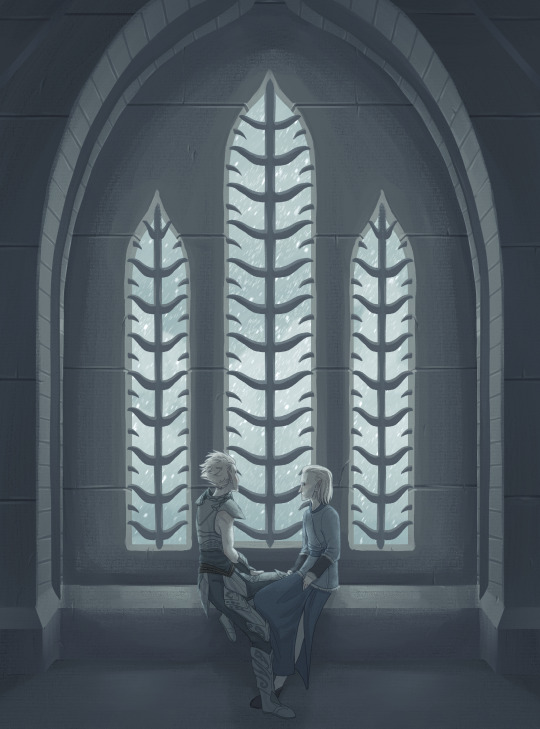
@tescheer Week 4: Blizzard
Snow Elf headcanon time! (ft. A younger Gelebor and Vyrthur)
We don’t know a lot about the Snow Elf religious practices, but the sun-inspired motifs and imagery in a place that probably gets nasty winter weather and little to no sunlight for several months of the year intrigues me. I like to think the folks at the Chantry of Auri-El think of winter as a more contemplative time and a time to test and strengthen one’s faith.
#tescheer#tescheer2023#skyrim#tes#the elder scrolls#snow elves#gelebor#vyrthur#my art#mine#this ended up being more background practice than anything so don’t look too closely at the boys
285 notes
·
View notes
Text
This is another aspect I considered! I headcannon that due to the increased difficulty in obtaining stone in the snowy regions they inhabitied, that the material would be reserved for significant religious or cultural structures. Royal Castles and Grand Temples would, in my view, be intricately constructed stone buildings sharing similarities with their Ayleid cousins.
Further, the Chantry of Auri-El, if I recall correctly, is stated to have been built in the waning days of the Ancient Snow Elves. It's possible that many of the Ice-Carvers were slain or occupied elsewhere by that point, possibly in attempts to use their magical talents to defend against the Nord onslaught. Ice-Carvers would've been talented mages in my view, and thusly valued on the battlefields and healing places.
Something I often think about is what Falmeri cities would've looked like.
If you examine the Merric Races, many of them utilize their natural surroundings as buildings in unique ways. Dunmer are seen living in giant Mushrooms, Bosmer live in trees, and i have my own theories about Maormer and Ayleid settlements.
If you extrapolate from these examples, it seems likely that at least a portion of Falmeri structures would be similarly adaptive of surrounding enviromental material. Thusly, I propose that many Ancient Falmeri building were made of Ice and Snow.
Imagine towers of Ice, gleaming in the winter sun, expertly carved with artwork, patterns and magick to preserve and enhance the material. Ice Temples whose walls reflect rainbows into their interior, showcasing the beauty of Magnus' /Auri-El's light. A cast of Ice-Minders, or Carvers, who learned ancient techniques to magically create and carve ice into homes, walls, towers, and art. This is my headcannon for why Falmeri ruins are so rare. Yes, the Atmorans destoryed many of their structures, but some were made of Magical Ice and Snow, whose enchantments must've required maintenance. Once the Falmer were gone, the magic slowly faded, and their beautiful cities of Ice wouldve melted. I'd imagine its more than possible that a glacier or icey tundra in skyrim was once an Ancient Merric City.
69 notes
·
View notes